December 14, 2022
Continuing south from Joshua Tree National Park, we made a short move south to Lake Cahuilla Veterans Regional Park in La Quinta, California. We spent eight nights at Lake Cahuilla using it as a base camp for more adventuring with Max and Makala (our family from back home), to visit my aunt and uncle in L.A., and for a big resupply/laundry day before continuing south. Max and Makala always enjoy having experiences that are different from all of our lives back home in Washington State. I made plans for us to visit the Salton Sea for a day. I was pretty sure it would either be a complete bust or one of the most unique places any of us had seen.
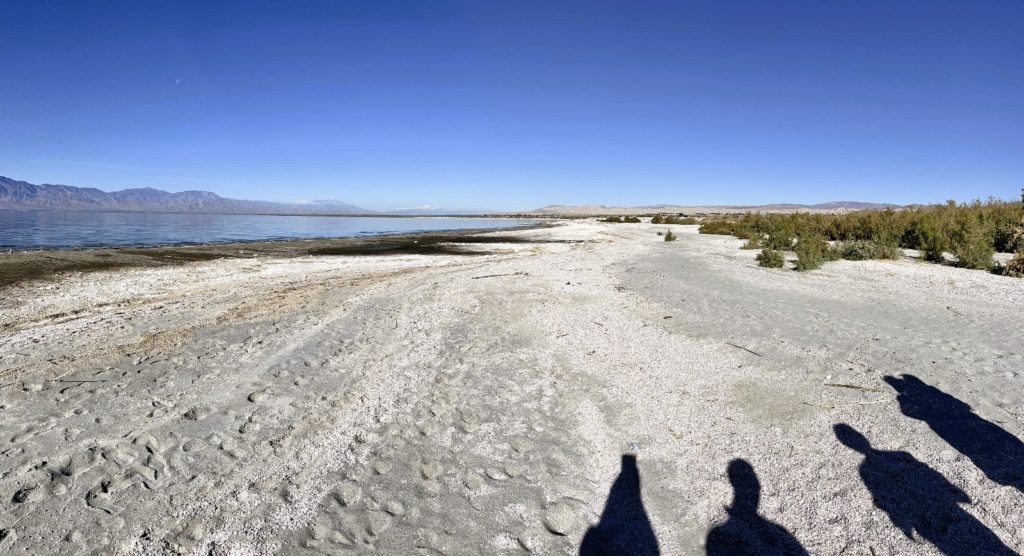
The Salton Sea: Past, Present, & Future
To appreciate the Salton Sea, you have to understand its troubled history. With 240,000 surface acres, the Salton Sea is California’s largest lake. It is situated just north of the U.S.-Mexican border in the Imperial Valley. The sea is essentially a gigantic ‘oops’ and a shining example of man’s poor environmental record. Located at 227 feet below sea level in the Salton Sink, the area was formerly a massive dry lakebed. Ancient Lake Cahuilla spanned 35 miles across by 100 miles long and to a depth of 300 feet.




In 1905, flooding along the nearby Colorado River allowed water to breach inadequately built irrigation canals. For the next year and a half, the entire flow of the Colorado River rushed downhill into the Sink. By the time engineers stopped the breach, the massive Salton Sea had been formed at 45 miles long, 20 miles wide and 50 feet deep.
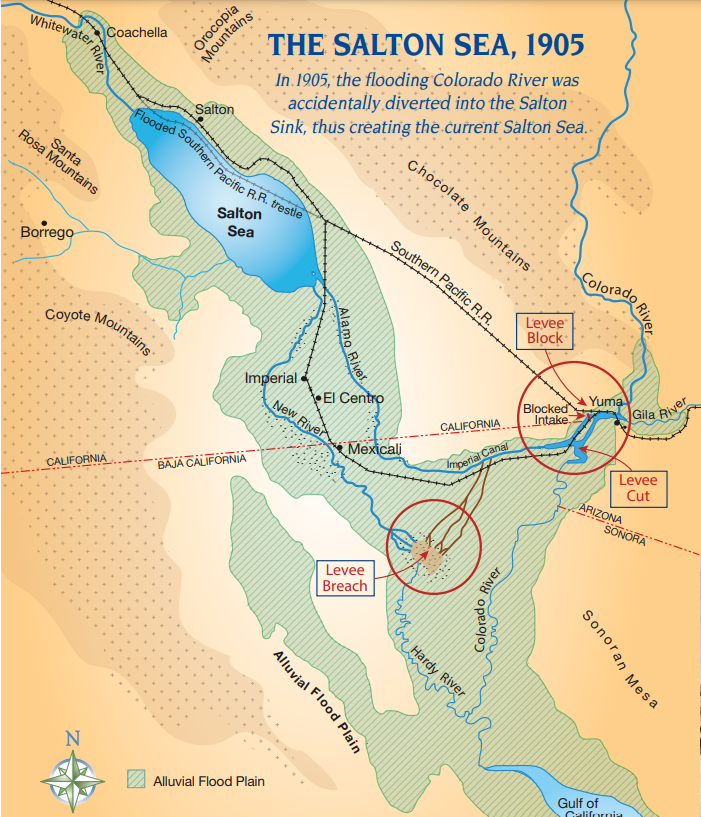
Situated along the Pacific Flyway, the Salton Sea immediately became critical habitat for over 2.5 million birds, many of which had been displaced by the destruction of much of the state’s freshwater wetlands for farming and irrigation. In 1930, the Salton Sea National Wildlife Refuge was established at the southern end of the lake. It has since been renamed the Sonny Bono Salton Sea National Wildlife Refuge in honor of the famous singer turned politician who was a proponent of saving the sea.


By the 1950’s and ‘60’s, the Salton Sea was known as California’s French Riviera. Developers built resorts, yacht clubs, large marinas, and a championship golf course. Celebrities and tourists flocked to the beaches for boating, waterskiing, swimming, and fishing. By the late 50’s, fishing was the biggest draw thanks to the introduction of several species of fish creating the most productive fishery in all of California. Communities were built to support the tourist population and towns like Salton City and Bombay Beach sprang up along the 130 miles of shoreline. During its peak years, the sea hosted 1.5 million visitors annually, more than Yosemite National Park.

In the 1970’s, a series of heavy tropical storms caused sea levels to rise causing significant damage to the seaside resort towns (the Salton Sea is a terminal lake with no outlet making it prone to flooding). Tourism steadily decreased over the next two decades. By the 1990’s, water levels began to drop considerably as more water was diverted to Southern California cities. Rainfall contributes some freshwater to the sea, but that is minimal given the area averages less than 3 inches of rainfall per year. More volume evaporates in the triple digit summertime heat than falls as rain. Further exaggerated by decades of drought, today the majority of the small amount of water flowing into the sea is agricultural runoff that carries high loads of pesticides, fertilizers and salts.
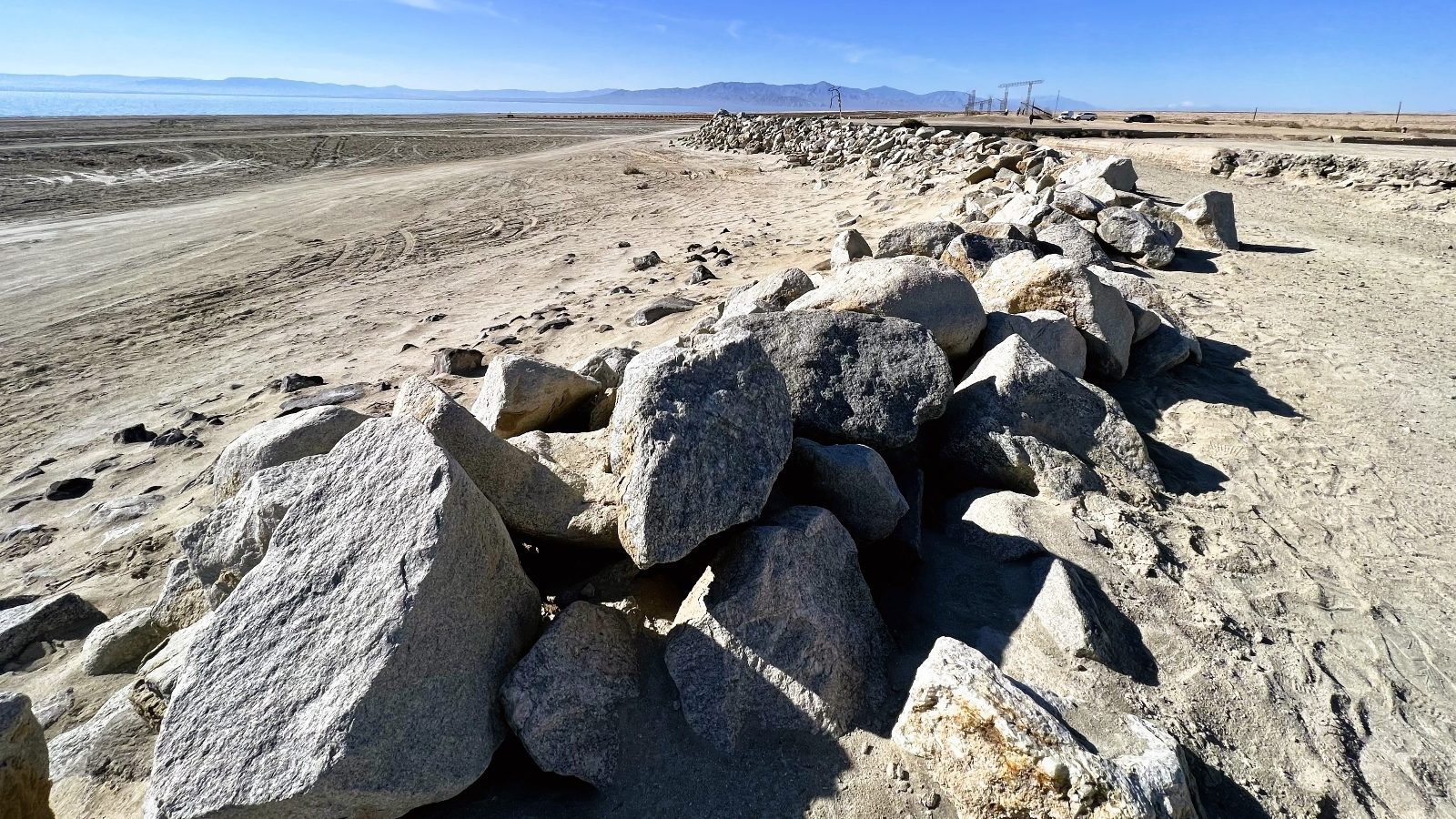
It is the perfect storm for an environmental disaster. Virtually no water flows into the sea. What does is polluted. As water evaporates, salinity levels increase and oxygen levels decrease. The sea is now saltier than the ocean. With no outlet, salts and pollutants have nowhere to go.

Most of the fish species that were introduced into the Salton Sea have died out due to the increased salinity and toxins. Birds ate the toxic fish and died by the thousands. Infectious diseases like cholera and Newcastle disease further contributed to the carnage. Picture the scene, masses of dead fish and birds lining the shore and rotting in the summer heat. Can you imagine the stench? Today, the seemingly beautiful white beaches of the Salton Sea are not made of soft sand. They are the desiccated and sun-bleached remains of fish, birds, and barnacles. Yes barnacles! They were introduced by seaplanes practicing military maneuvers during World War II. They thrived thanks to the saline environment and lack of natural predators.



Tilapia, a freshwater fish that tolerates saltwater conditions, was also introduced and has thrived in the saline waters. But even they have experienced mass die-offs due to algae blooms triggered by agricultural runoff. The excessive nitrogen used in fertilizers results in nutrient spikes causing the blooms. Eventually the algae dies and begins to decompose, depleting available oxygen in the water, essentially drowning the fish.
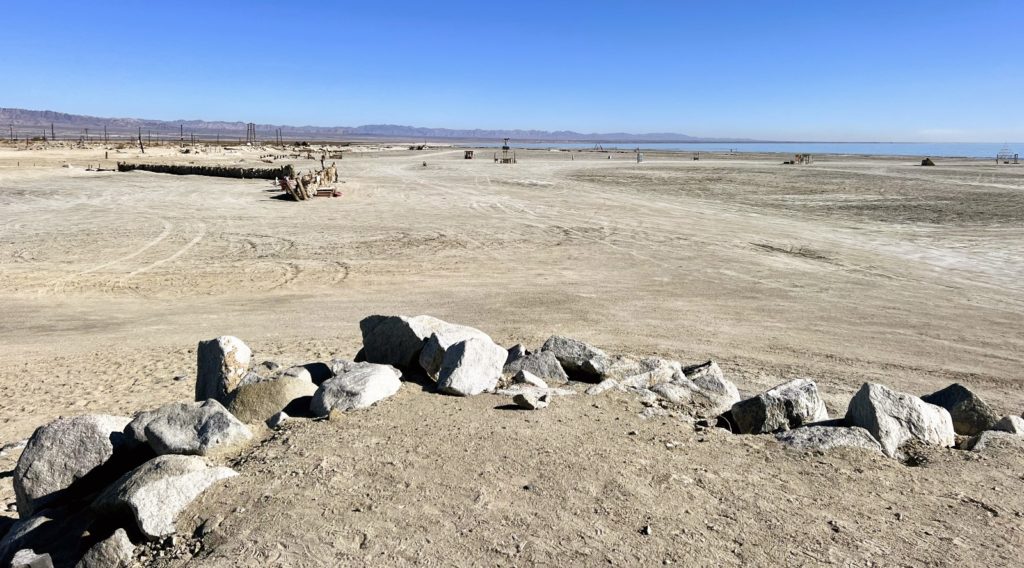
More concerning than the stench and transmission of diseases is the century of toxins that have been deposited on the lake bottom. As the Salton Sea shrinks and the dry lakebed is exposed, desert winds kick up toxic dust storms. As a result, the county surrounding the Salton Sea, Imperial County, has the highest rate of asthma-related hospitalizations in California.

Over the past three decades, the once thriving resort towns of Salton City and Bombay Beach have fallen into disrepair—ghost towns in the making. Many of their buildings are abandoned and heavily graffitied. You can imagine, the sight and smell of so much death and toxic dust storms aren’t good for tourism. Still, a few residents remain and some tourism does persist. Bombay Beach, in particular, has an unusual art scene that draws photographers and curious tourists. And over 400 species of birds continue to rely on the Salton Sea for breeding, overwintering, and/or stopover habitat during their migration along the Pacific Flyway. The sea has become one of North America’s premier birding destinations and the Salton Sea State Recreation Area offers nice facilities for visitors.
While the environmental future of the Salton Sea seems doomed with its lack of water and toxic dust clouds, the financial future seems bright. The development of geothermal energy and one of the world’s largest lithium deposits look to bring economic prosperity to the area once again.
Salton Sea State Recreation Area
Salton Sea State Recreation Area covers 14 miles of the sea’s northeastern shore and remains a popular site for campers, birdwatchers, photographers, boaters, kayakers, and anglers. Fishing for tilapia is still excellent and signs at the visitor center say the water does not pose any health hazards—although I think I’ll take a hard pass on swimming there. Birdwatching and camping opportunities are good provided you can time a trip when the smell of decomposition isn’t overwhelming and the winds aren’t kicking up clouds of toxic dust.

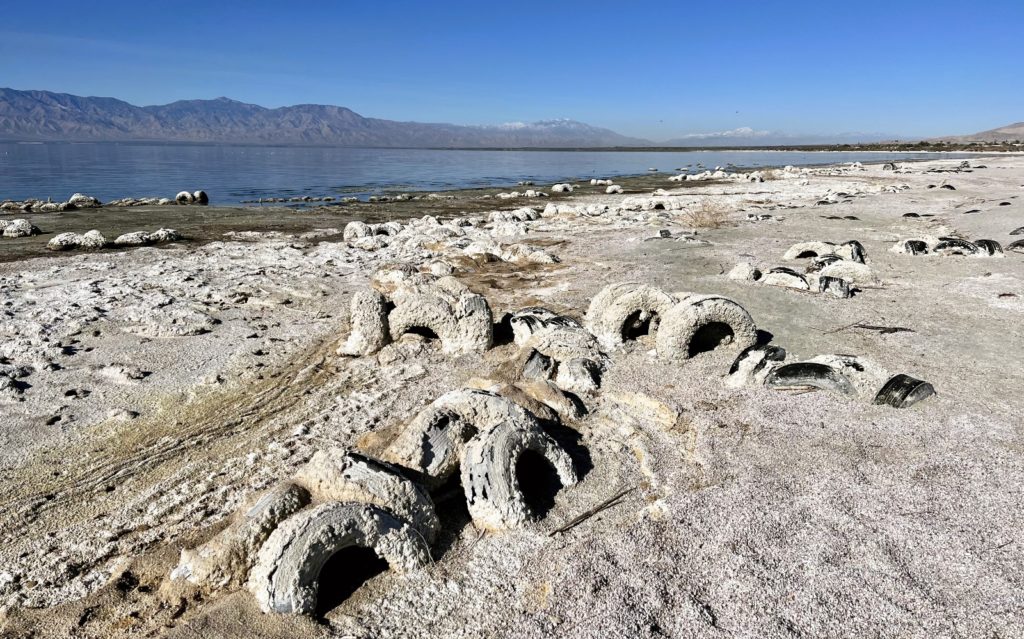
The Salton Sea State Recreation Area has many day use sites, boat ramp, beach access, visitor center, and fishing jetty. The park also has three developed campgrounds: Headquarters, New Camp, and Mecca Beach. Hookups are available at some sites and a variety of amenities are available including showers. Corvina and Salt Creek campgrounds offer primitive camping along the lake’s shoreline. Click here for a park brochure that will provide you with all the details needed for your visit.
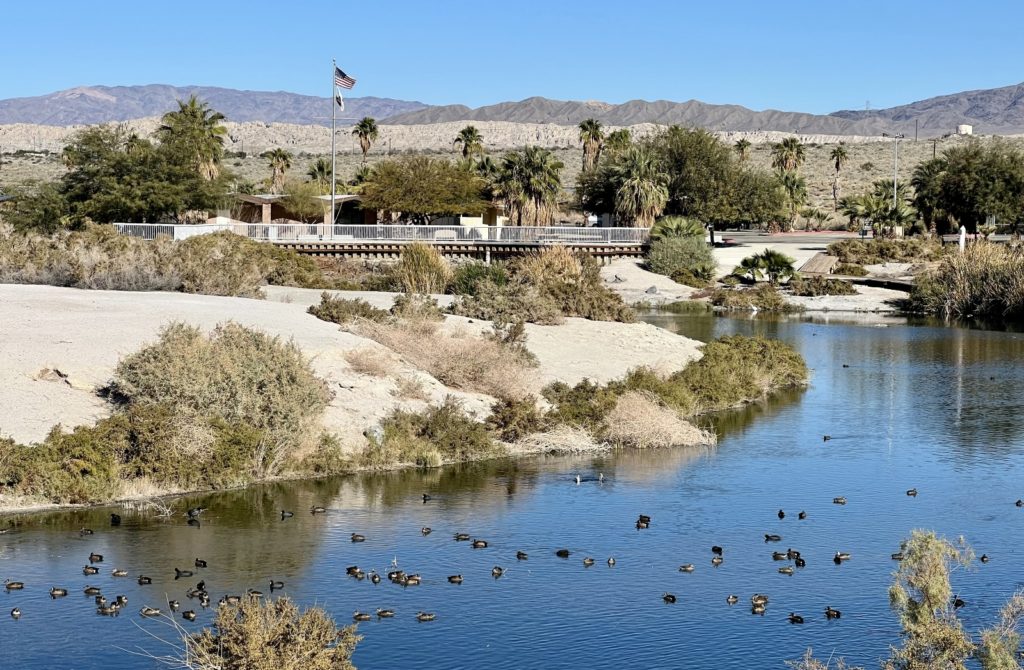
As crazy as it sounds, I found the Salton Sea to have a certain charm and beauty. We enjoyed beautiful weather, no foul smells, and virtually no other people. I especially enjoyed seeing the many species of birds in the harbor near the visitor center and it felt a little like being on the ocean. As a biologist, it was fascinating to walk along the beach and look at all the fish bones and barnacles. We drove through the Corvina and Salt Creek campgrounds and I think it would be nice to spend a couple nights there some day to enjoy some birdwatching right out our front door.
What Happens at Bombay Beach Happens Nowhere Else
Apocalyptic. Bohemian. Creepy. Strange. Cool. Artistic. Bizarre.

I have seen all of these terms used to describe the resort community of Bombay Beach—and they were all spot on. I think it might be the most wonderfully strange place we have ever visited and no trip to the Salton Sea would be complete without spending some time there. Once a vacation destination for Hollywood celebrities in the 1950’s, Bombay Beach is now part ghost town littered with graffitied homes, part bohemian artist community, and part community on the edge of survival.
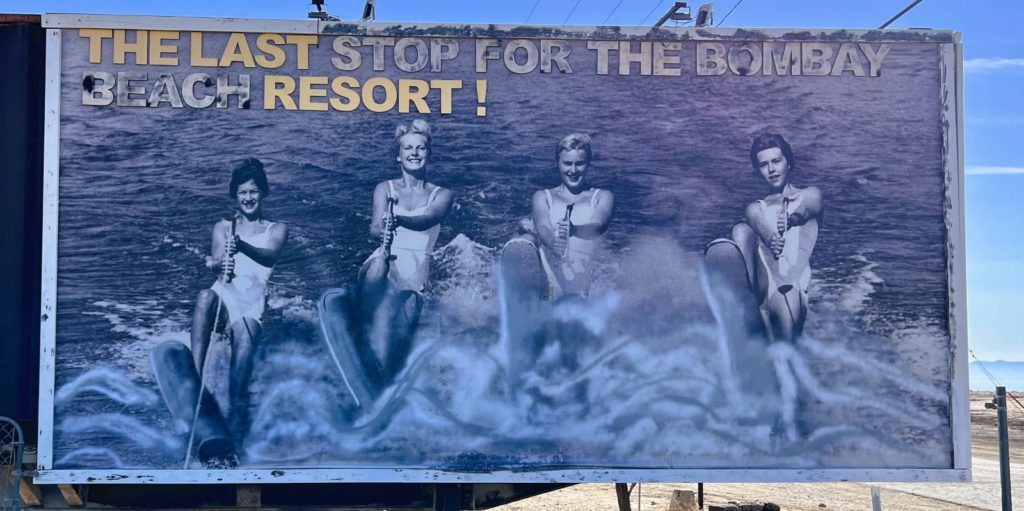
For our visit, we drove through several blocks of the small town and gazed in fascination at the abandoned buildings, colorful graffiti, and odd sights. It was one of those towns where you feel like you need to roll your windows up and lock the doors, but I don’t believe we were in any danger. Some homes are still occupied and kept up well enough. It was just a very different vibe than any of us were accustom to.
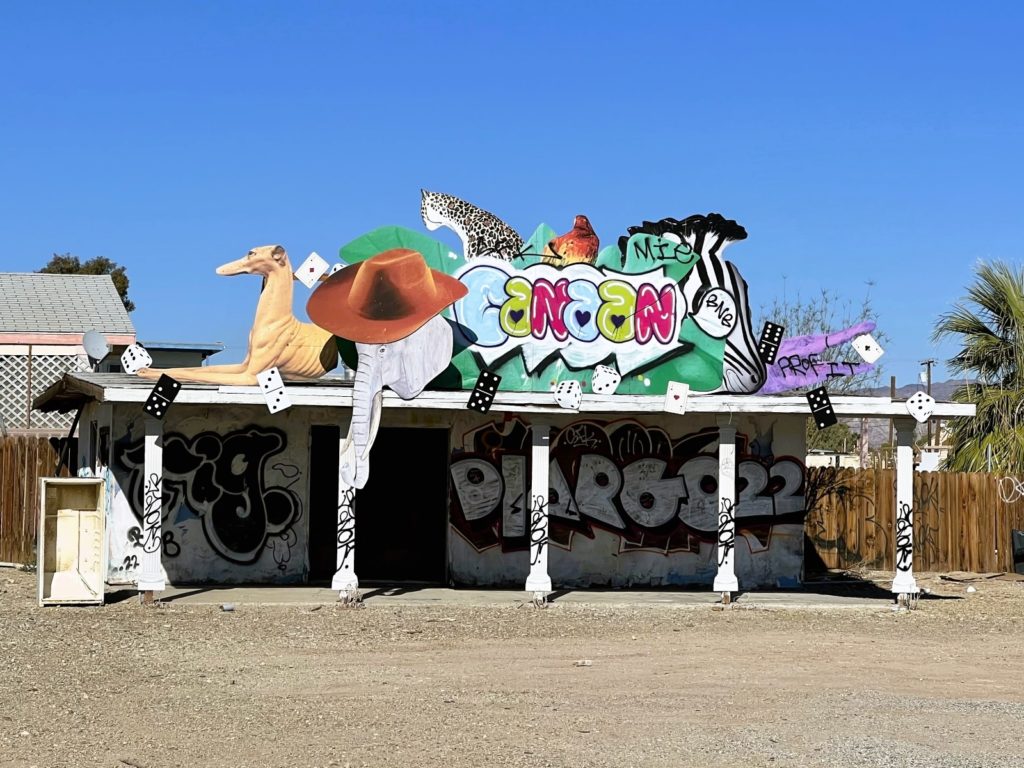



Next we drove our truck out onto the beach and set about visiting all of the unique art displays. It felt a bit like we stepped into an alternate universe and at times we weren’t quite sure what we were looking at. But we all loved it and embraced the strange. Below is just a fraction of the photos I took. I hope you enjoy the sights as much as we did.







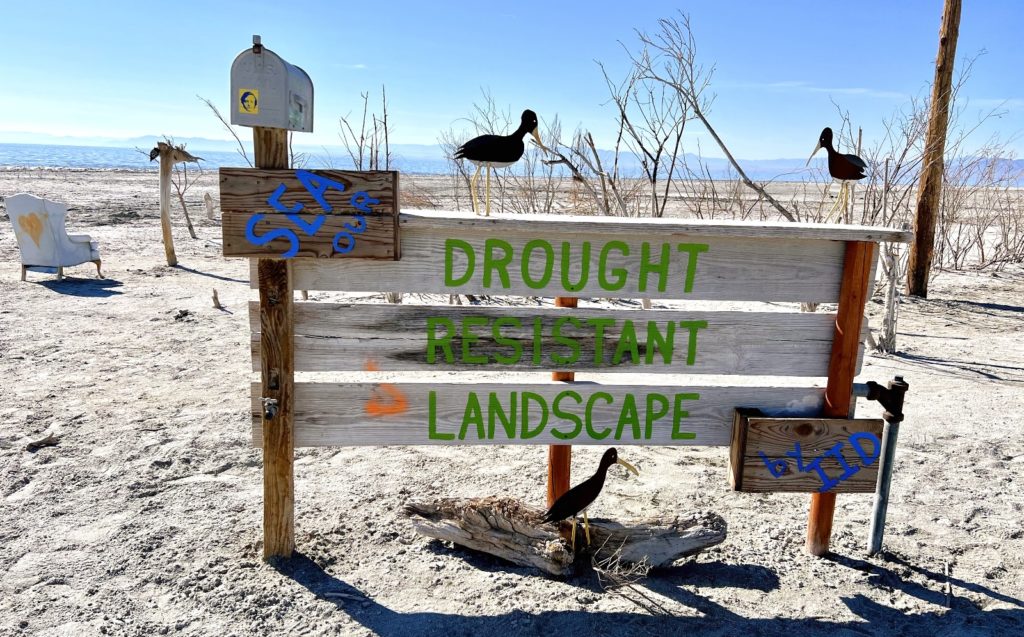




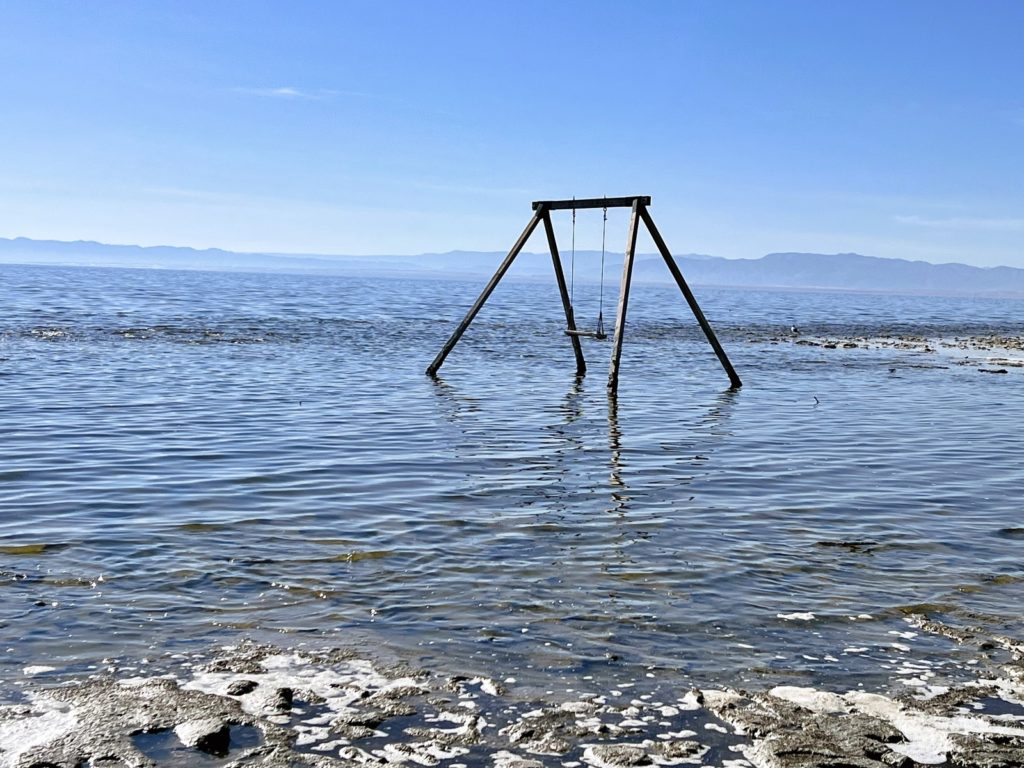


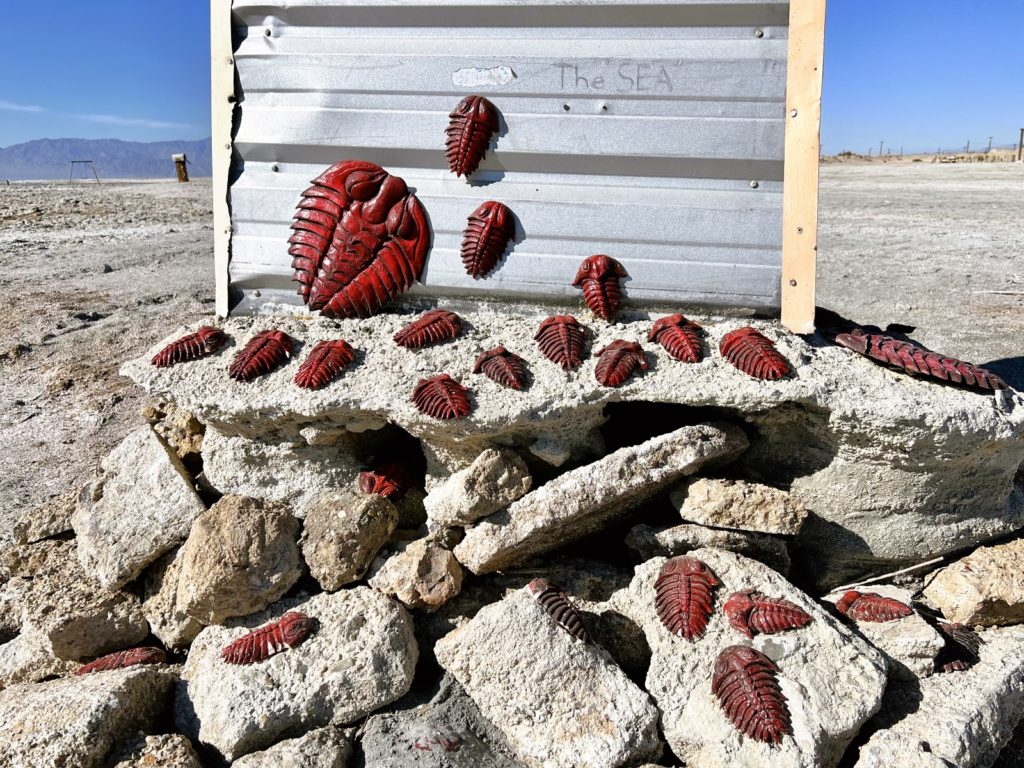
















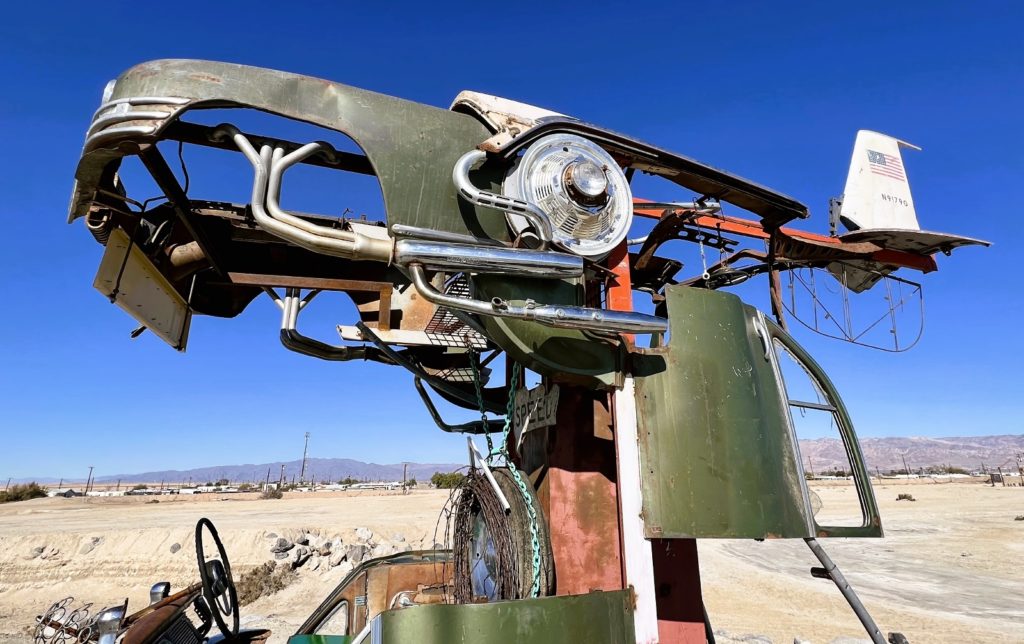
The Adventure Continues
Join us for our next post as we explore the southern reaches of Joshua Tree National Park and enjoy some sun and relaxation at Lake Cahuilla. And don’t forget to check out our Amazon RV and Adventure Gear recommendations. We only post products that we use and that meet the Evans Outdoor Adventures seal of approval. By accessing Amazon through our links and making any purchase (even things as simple as toothpaste!), you get Amazon’s every day low pricing and they share a little with us. This helps us maintain this website and is much appreciated!

Wow! I didn’t realize there was so much there! Salton Sea Rec Area will go on the “to visit” list!
The primitive campgrounds have really nice “seaside” spots with tons of birds for Rusty and Mica’s entertainment 🙂